- Home
- Lawrence Block
The Crime of Our Lives Page 2
The Crime of Our Lives Read online
Page 2
This and that.
The ideas that came to me and the stories that worked best for me tended to fit somewhere in the broad category of mystery and suspense. Even when they didn’t start out that way, they tended to wind up there.
For example, in the late ’60s I wrote a lighthearted little novel, a sort of Lecher in the Rye about a seventeen-year-old boy and his efforts to lose his virginity. Gold Medal published it as No Score, with the byline Chip Harrison, that being the name of the narrator. It sold particularly well, probably because it had a terrific cover, and I was moved to write a sequel, which the publisher imaginatively titled Chip Harrison Scores Again.
Well, I wanted to write more about Chip, but I sensed a problem. In the first book he’d been seventeen years old and innocent. In the second he was a year older and a good deal more experienced. At this rate he’d be a jaded roué in no time at all, and his charm was by no means the sort that age cannot wither, nor custom stale.
Inspiration struck. In the third book I put him to work for a private detective, a road-company Nero Wolfe, and knew he’d endure like an insect in amber. “You were wise to take this job,” his employer told him. “Now you’ll never grow old. You’ll be the same age forever, like all the private eyes in fiction.” He never did grow old, but not because of the mystery’s fountain-of-youth properties. Alas, after he’d appeared in two Nero Wolfe pastiches I ran out of things for him to do and let him retire.
Some fictional detectives age. Some stay young (or middle-aged or old) forever. Some die. Agatha Christie left two manuscripts to be published posthumously; in them she killed off her two most enduring detectives, Hercule Poirot and Miss Marple. Nicholas Freeling did not wait for his own death to kill his Inspector Van der Valk. He bumped him off in midcareer in remarkably cavalier fashion, and alienated most of his readers in the process. Conan Doyle tried that, sending Sherlock Holmes over the Reichenbach Falls, but wound up bringing him back in response to popular demand.
At the other extreme some fictional detectives outlive their creators. A number of writers have kept Sherlock Holmes going, often matching him up with historical personages; in one of the more successful books, Holmes and Sigmund Freud wind up doing coke together. Robert Goldsborough wrote a Nero Wolfe novel after Rex Stout’s death with the aim of amusing his mother. He has since written and published several more. A couple of years ago a dozen writers produced an anthology of new stories about Philip Marlowe, ostensibly to honor Raymond Chandler on his hundredth birthday. I suppose it’s all right, so long as they only do it once every hundred years.
There are, as everyone knows, two kinds of people in the world: those who divide the world into two kinds of people and those who don’t. The world of crime fiction gets similarly cleft in twain. Mysteries are divided into two categories: the tough, gritty, mean-streets, in-your-face kind, which is labeled hardboiled, and the gentle, effete, British country-house body-in-the-library sort, which is called cozy.
Stereotypically, the hardboiled mystery is American. It features, and is very likely narrated by, a private detective, a hard-drinking softhearted cynic who looks a little like Humphrey Bogart when he’s not looking like Robert Mitchum. The hardboiled novel is written by a man and read by men. It is sour and downbeat and violent, and it means business.
In contrast, the cozy is English, written by women and for women. Its detective is apt to be an inspired amateur, male or female, and all its characters, except for the odd charming rustic, tend to be well spoken and courteous, decorous even in death. Its violence is offstage and unthreatening, leaning toward esoteric poisons and ingenious murder methods. The sleuth sets things right by working out an elaborate puzzle, and order is restored to a universe that is orderly at heart.
These stereotypes are undoubtedly useful, but they have their downside. Their rules are broken in book after book. British writers drag the reader through London’s mean streets while Americans employ country-house settings. Women write hardboiled private-eye novels about tough female detectives, and other women read them, while men turn out intricately plotted cozies.
More to the point, the stereotypes tend to trivialize books of either persuasion. The cozy would seem to be frivolous, a bit of fluff that diminishes murder, and some of its specimens may have that effect. Yet no one epitomizes the cozy writer more than Agatha Christie, with her brilliantly worked plots and her comforting village settings. Her finest creation, Miss Jane Marple of St. Mary’s Mead, is the ultimate amateur sleuth, a little old lady in plimsolls with a steel-trap mind. The books are entertainments, surely. And yet they are dead serious. Christie’s concern in all her fiction, and especially in the Marple books, is the nature and origin of human evil. It is possible to read the novels attentively without becoming aware of it, but make no mistake about it, that is what they are about.
One of the abiding virtues of crime fiction, it seems to me, and one of the chief factors in its survival over the generations as a literary genre, is the seemingly infinite variety of work that falls within its scope. The house of mystery has many mansions, and it is a rare reader who can’t find something he or she likes in one chamber or another. Now and then I run into someone who professes never to read mysteries, and I find such specimens at least as curious as those who read nothing else. The majority seem to be people who never got the knack of reading for diversion; a few are of the sort who read one mystery once, didn’t much like it, and assumed all others to be the same.
As a reader I have always been able to find crime novels to read even as my own taste has changed and evolved. As a writer I have found that the genre’s wide-spaced boundaries have allowed me to write whatever it has occurred to me to write without placing myself beyond the pale. Over the years I have written novels about four different series characters. Evan Tanner, who has appeared in seven books, is a sort of freelance adventurer whose sleep center was destroyed by a stray shard of shrapnel. He speaks innumerable languages, supports no end of lost causes (among them the restoration of the House of Stuart to the British throne), and slips himself and others across international borders, all in the interest of peace and freedom.
Bernie Rhodenbarr is a bookseller by day, a burglar by night. Typically he has to solve an intricate murder puzzle in order to extricate himself from suspicion incurred in the commission of a burglary. He is an urbane and literate chap, a nice guy who lives on the West Side and steals on the East Side. Whoopi Goldberg played him in the movie. (Don’t ask.) His best friend is a lesbian poodle groomer.
Matthew Scudder is an alcoholic ex-cop, divorced, living alone in a cheap hotel in the West Fifties, eking out a living as an unlicensed private eye. He hangs out in churches (and, recently, at AA meetings in church basements), leads an angst-ridden life, and walks down some very mean streets indeed.
And I’ve already mentioned Chip Harrison, playing a horny adolescent Archie Goodwin to Leo Haig’s version of Nero Wolfe.
Here’s the point. These series differ considerably one from another—in type, in tone, in purpose. And I’ve also written a dozen or so non-series novels, and they don’t run to type either. Yet all these books manage to be at home in the field of crime fiction. Not all my readers care for me in all my guises. One working private detective is a big Scudder fan but won’t read my Bernie Rhodenbarr books, because he disapproves of my glorifying a character who is, when all is said and done, a miscreant and a lawbreaker. Some of Bernie’s fans find Scudder’s world too relentlessly downbeat for them. Quite a few readers have found Tanner’s exploits too far-fetched to be taken seriously, yet others keep turning up to ask me when I’m going to write another book about him.
I should say something about fans. Compared with science fiction, mysteries barely have a true fandom. Science-fiction fans hold dozens of conventions annually, read everything written in their chosen field and nothing outside it, publish innumerable amateur magazines and newsletters (“fanzines”), and, according to one of the field’s leading editors, are all f
ifteen-year-old boys who aren’t very well socialized.
Mystery fans assemble at a single annual convention, the Bouchercon, named for the late Anthony Boucher, a mystery writer himself who was even more renowned as the field’s foremost critic. Held every year in a different city, Bouchercon brings together upward of five hundred crime-fiction devotees. One writer is chosen as the annual guest of honor, his expenses paid by the host committee, but fifty or more other writers pay full price for the chance to natter away on celebrity panels, inscribe books for fans, hang out with booksellers and editors, and play poker until daybreak.
Bouchercon is always a great success, and a big factor here, I’m convinced, is the estimable nature of the people involved. Mystery readers are an uncommonly literate lot, inclined to choose substance over pretense every time. (It is interesting to note what they read outside the genre. Several mystery bookstores carry the odd nonmystery now and then because the proprietor just knows it will appeal to the store’s customers. Most but by no means all of these books are about cats. W. R. Kinsella’s Shoeless Joe sold well in mystery bookshops, as did Walter Tevis’s wonderful novel of a girl chess prodigy, The Queen’s Gambit.)
The mystery bookstore is largely a phenomenon of the last decade. Booksellers in general are a dedicated bunch, and the proprietors of stores dealing exclusively in mysteries would not be in the field if they did not love it. Their shops often have the ambience of clubhouses, and many of their customers drop in as much to chat as to buy books. Murder Ink, Grounds for Murder, Sherlock’s Home, Rue Morgue, Footprints of a Gigantic Hound, Booked for Murder, Foul Play, The Butler Did it, Murder Undercover, Once Upon a Crime, Murder for Pleasure, Scene of the Crime—the ingenuity displayed in the stores’ names suggests the resourcefulness of the people who operate them.
Finally, mystery writers themselves tend to be an amiable sort. At a recent Bouchercon in Philadelphia, several of us were sitting around while one talked about his difficulties with an author. “What’s remarkable about the guy,” someone said, “is he’s the only thoroughgoing S.O.B. in the field. I can think of a few guys I’m not crazy about, but he’s the only real bastard around.”
I could, if pressed, name another, but given the traditional nature of auctorial ego and artistic temperament, it seems extraordinary that such a large barrel should have so few sour apples in it.
While I’ll leave it to psychiatry to explain why men and women who spend their lives writing about bloody murder should be so affable on their own time, I can guess why we’re so apt to relish one another’s company. The great majority of us are enthusiastic readers of crime fiction. Most of us were fans before we were writers, and continue to read one another’s work avidly.
Besides such domestic organizations as Mystery Writers of America and Private Eye Writers of America, I belong to a fairly new outfit called the International Association of Crime Writers, with members on both sides of what we used to call the Iron Curtain. In the summer of 1988 I attended an IACW convocation at Gijón on Spain’s northern coast. There were around sixty writers present from all over the world, and the majority of us were unfamiliar with one another’s work. Most of our contingent spoke only English, and the group as a whole was a testament to the far-reaching effects of the Tower of Babel. There was one woman from Japan who came accompanied by an interpreter, and even he could barely understand her, as her first language was some outer-island dialect more exotic than Basque.
No matter. We all were crime writers. Everybody had a wonderful time.
Oh, all right. Enough stalling. A piece like this has to have a ten-best list, doesn’t it? People do keep coming up with lists. An English mystery writer published a book not long ago with two-page discourses on each of his hundred favorites. (I’d mention his name, but he didn’t mention mine, so to hell with him.) My list has a couple of special characteristics that ought to be pointed out. First of all, it consists solely of American writers. I am writing, after all, for a magazine devoted to matters American, so I trust I am not being excessively parochial in keeping foreign writers off this particular list.
It is perhaps largely for this reason that most of the writers I’ve listed are of the hardboiled school. Born in the detective pulps after the turn of the present century, hardboiled crime fiction was very much an American invention.
After Poe, pre-eminence in the mystery field passed to the British. Wilkie Collins wrote The Moonstone, Sir Arthur Conan Doyle created Sherlock Holmes, R. Austin Freeman wrote about Dr. Thorndyke, and any number of British writers went on to develop the detective story as a suspenseful adventure, an intellectual exercise, and a look into the darker corners of the human psyche.
Some American writers followed in these British footsteps, with greater or lesser success. But in the pulp magazines another tradition was born. Crude, violent, rough-edged, cynical, often antiauthoritarian, pulp crime fiction spoke in a new voice that caught much of the spirit of post-World War I America.
A group of writers centered on Black Mask magazine forged hardboiled fiction into something honest and vigorous; of their number, Hammett and Chandler emerged to produce something that will pass for Art. Years after their passing we still write this sort of book better than anyone else. The French have an insatiable appetite for the roman noir and accord the work considerable critical respect—rather more, I sometimes think, than it truly deserves. But very few of the hardboiled crime novels published in France are homegrown.
The British can write hardboiled books, but some of their best tough writers set their books in America, as if to say that a hardboiled crime story demands an American setting. James Hadley Chase and Peter Chambers, the latter a devoted admirer of Raymond Chandler, are quite popular at home but have never traveled well, and few of their books are published here. Their American settings and dialogue may strike a British reader as perfectly authentic, but they clang horribly on an American ear. (This sort of thing works both ways. An American woman writes British cozies set in England, to the rich delight of an enormous American following. Most of her fans assume she’s English, a mistake no English reader would be likely to make. “She gets everything all wrong,” an English fan told me. “I can’t believe your lot takes her seriously.”)
At the same time, I have to admit that the preponderance of the hardboiled on my list reflects a prejudice of the author. I tend to prefer hardboiled (or, if you will, realistic) crime fiction and to see it as of more fundamental importance than softer, gentler books.
The reader will further note that my list has no women on it. This would certainly appear evidence of blatant sexism, and perhaps it is. In rebuttal I would argue that Agatha Christie and Dorothy Sayers would certainly be on my list but for the fact that they are British. And several American mystery writers would be on the list, too, but for the happy fact that they are alive.
Because, you see, I have listed only writers who have gone to that great Bouchercon in the sky. I have mentioned how generous and amiable mystery writers are, how much I enjoy their company, how well we all get along. If you think I am going to change all that by assembling a list of favorites and leaving some of them off it, you’re out of your mind.
One last note. This is a list not of best books but of favorite writers, although I have occasionally mentioned a book or two that I remember with special fondness.
Here’s the good news: Instead of ten favorites, I seem to have come up with sixteen. And it was easy to put them in order. I just used the alphabet.
Anthony Boucher (1911-68)
Boucher’s reputation rests largely upon his influence as a reviewer, which was monumental. From 1951 until his death he wrote the weekly “Criminals at Large” column for The New York Times Book Review, covering virtually everything of note published in the mystery field. He reviewed paperback originals at a time when no one else took much notice of them, discovered and encouraged promising new writers, and widened the tastes of his readers while sharpening their perceptions. During many of t
he same years he also reviewed plays and opera and science fiction, appeared on radio and television, edited a science-fiction magazine and a number of anthologies, and died young after many years of intermittent ill health.
In addition, he wrote eight novels and a couple of dozen short stories. I think it is safe to say that he would have been more prominent as a writer of fiction if less of his energy had gone into other pursuits. His books are slight, but their charm and the skill with which they were written keep them sprightly and engaging. My own favorite, though but dimly recalled, is Nine Times Nine, a locked-room mystery investigated by Sister Ursula of the Order of Martha of Bethany. (As a reviewer and editor Anthony Boucher was always an easy mark for a story with a nun or a cat in it.)
It was published under the name H. H. Holmes, an alias previously employed by a mass murderer of the nineteenth century. “Anthony Boucher” was itself a pen name; the author’s actual name was William Anthony Parker White.
Fredric Brown (1906-72)
I discovered Fredric Brown around the time I began selling stories to the crime pulps, and I read everything of his I could get my hands on. One time, after a hard week at a literary agency where I was gainlessly employed as a reader of unsolicited submissions, I read Murder Can Be Fun, in which a murder is committed early on in full view of dozens of bystanders—by a killer dressed up as Santa Claus. I had a bottle of bourbon on the table, and every time Brown’s hero took a drink, I had a snort myself. This is a hazardous undertaking when in the company of Brown’s characters and, I’ve been given to understand, would have been just as dangerous around the author himself. By the time the book was finished, so was I.
Brown was a playful, inventive, prolific writer who never wrote the same book twice. The Fabulous Clipjoint, his Edgar-winning first novel, is perhaps his best book. In it young Ed Hunter joins forces with his uncle Ambrose, a former carnival performer, to investigate the murder of Ed’s father. The Chicago background is perfect, the carny lore a big plus. The Screaming Mimi and Night of the Jabberwock are also vintage Brown. My own favorite is The Wench Is Dead, about a sociology professor immersing himself in L.A.’s Skid Row in the name of research.

 Tanner on Ice
Tanner on Ice Hit Me
Hit Me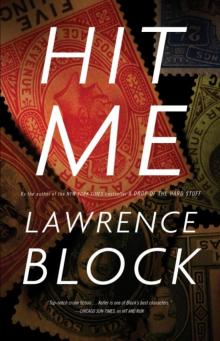 Hit and Run
Hit and Run Hope to Die
Hope to Die Two For Tanner
Two For Tanner Tanners Virgin
Tanners Virgin Dead Girl Blues
Dead Girl Blues One Night Stands and Lost Weekends
One Night Stands and Lost Weekends A Drop of the Hard Stuff
A Drop of the Hard Stuff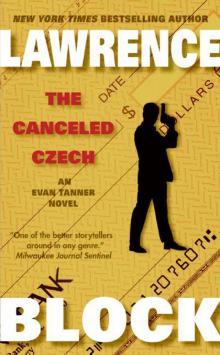 The Canceled Czech
The Canceled Czech Even the Wicked
Even the Wicked Me Tanner, You Jane
Me Tanner, You Jane Quotidian Keller
Quotidian Keller Small Town
Small Town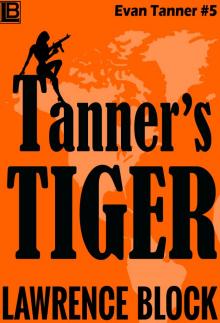 Tanners Tiger
Tanners Tiger A Walk Among the Tombstones
A Walk Among the Tombstones Tanners Twelve Swingers
Tanners Twelve Swingers Gym Rat & the Murder Club
Gym Rat & the Murder Club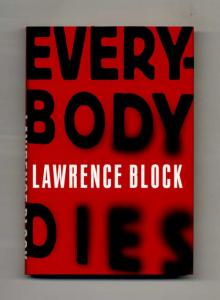 Everybody Dies
Everybody Dies The Thief Who Couldnt Sleep
The Thief Who Couldnt Sleep Hit Parade
Hit Parade The Devil Knows Youre Dead
The Devil Knows Youre Dead The Burglar in Short Order
The Burglar in Short Order A Long Line of Dead Men
A Long Line of Dead Men Keller's Homecoming
Keller's Homecoming Resume Speed
Resume Speed Keller's Adjustment
Keller's Adjustment Eight Million Ways to Die
Eight Million Ways to Die Time to Murder and Create
Time to Murder and Create Out on the Cutting Edge
Out on the Cutting Edge A Dance at the Slaughter House
A Dance at the Slaughter House In the Midst of Death
In the Midst of Death When the Sacred Ginmill Closes
When the Sacred Ginmill Closes You Could Call It Murder
You Could Call It Murder Keller on the Spot
Keller on the Spot A Ticket to the Boneyard
A Ticket to the Boneyard A Time to Scatter Stones
A Time to Scatter Stones Keller's Designated Hitter
Keller's Designated Hitter A Stab in the Dark
A Stab in the Dark Sins of the Fathers
Sins of the Fathers The Burglar in the Closet
The Burglar in the Closet Burglar Who Dropped In On Elvis
Burglar Who Dropped In On Elvis The Burglar Who Painted Like Mondrian
The Burglar Who Painted Like Mondrian The Girl With the Long Green Heart
The Girl With the Long Green Heart The Burglar Who Counted the Spoons (Bernie Rhodenbarr)
The Burglar Who Counted the Spoons (Bernie Rhodenbarr) Burglar Who Smelled Smoke
Burglar Who Smelled Smoke Rude Awakening (Kit Tolliver #2) (The Kit Tolliver Stories)
Rude Awakening (Kit Tolliver #2) (The Kit Tolliver Stories) Don't Get in the Car (Kit Tolliver #9) (The Kit Tolliver Stories)
Don't Get in the Car (Kit Tolliver #9) (The Kit Tolliver Stories) CH04 - The Topless Tulip Caper
CH04 - The Topless Tulip Caper You Can Call Me Lucky (Kit Tolliver #3) (The Kit Tolliver Stories)
You Can Call Me Lucky (Kit Tolliver #3) (The Kit Tolliver Stories) CH02 - Chip Harrison Scores Again
CH02 - Chip Harrison Scores Again Strangers on a Handball Court
Strangers on a Handball Court Cleveland in My Dreams
Cleveland in My Dreams Clean Slate (Kit Tolliver #4) (The Kit Tolliver Stories)
Clean Slate (Kit Tolliver #4) (The Kit Tolliver Stories) The Burglar Who Traded Ted Williams
The Burglar Who Traded Ted Williams Burglar on the Prowl
Burglar on the Prowl In For a Penny (A Story From the Dark Side)
In For a Penny (A Story From the Dark Side) Catch and Release Paperback
Catch and Release Paperback Ride A White Horse
Ride A White Horse No Score
No Score Looking for David (A Matthew Scudder Story Book 7)
Looking for David (A Matthew Scudder Story Book 7)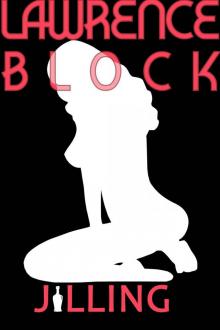 Jilling (Kit Tolliver #6) (The Kit Tolliver Stories)
Jilling (Kit Tolliver #6) (The Kit Tolliver Stories) Ariel
Ariel Enough Rope
Enough Rope Grifter's Game
Grifter's Game Canceled Czech
Canceled Czech Unfinished Business (Kit Tolliver #12) (The Kit Tolliver Stories)
Unfinished Business (Kit Tolliver #12) (The Kit Tolliver Stories) Thirty
Thirty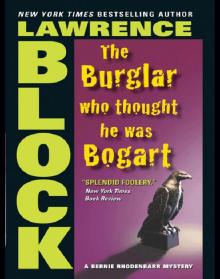 The Burglar Who Thought He Was Bogart
The Burglar Who Thought He Was Bogart Make Out with Murder
Make Out with Murder One Last Night at Grogan's (A Matthew Scudder Story Book 11)
One Last Night at Grogan's (A Matthew Scudder Story Book 11) The Burglar on the Prowl
The Burglar on the Prowl Welcome to the Real World (A Story From the Dark Side)
Welcome to the Real World (A Story From the Dark Side) Keller 05 - Hit Me
Keller 05 - Hit Me Walk Among the Tombstones: A Matthew Scudder Crime Novel
Walk Among the Tombstones: A Matthew Scudder Crime Novel Ronald Rabbit Is a Dirty Old Man
Ronald Rabbit Is a Dirty Old Man The Burglar Who Studied Spinoza
The Burglar Who Studied Spinoza The Burglar Who Liked to Quote Kipling
The Burglar Who Liked to Quote Kipling Keller in Des Moines
Keller in Des Moines Hit List
Hit List The Dettweiler Solution
The Dettweiler Solution HCC 115 - Borderline
HCC 115 - Borderline A Drop of the Hard Stuff: A Matthew Scudder Novel
A Drop of the Hard Stuff: A Matthew Scudder Novel Step by Step
Step by Step The Girl With the Deep Blue Eyes
The Girl With the Deep Blue Eyes If You Can't Stand the Heat (Kit Tolliver #1) (The Kit Tolliver Stories)
If You Can't Stand the Heat (Kit Tolliver #1) (The Kit Tolliver Stories) The Topless Tulip Caper
The Topless Tulip Caper Dolly's Trash & Treasures (A Story From the Dark Side)
Dolly's Trash & Treasures (A Story From the Dark Side) The Triumph of Evil
The Triumph of Evil Fun with Brady and Angelica (Kit Tolliver #10 (The Kit Tolliver Stories)
Fun with Brady and Angelica (Kit Tolliver #10 (The Kit Tolliver Stories) Burglars Can't Be Choosers
Burglars Can't Be Choosers Who Knows Where It Goes (A Story From the Dark Side)
Who Knows Where It Goes (A Story From the Dark Side) Deadly Honeymoon
Deadly Honeymoon Like a Bone in the Throat (A Story From the Dark Side)
Like a Bone in the Throat (A Story From the Dark Side) A Chance to Get Even (A Story From the Dark Side)
A Chance to Get Even (A Story From the Dark Side)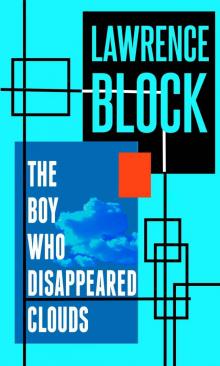 The Boy Who Disappeared Clouds
The Boy Who Disappeared Clouds Collecting Ackermans
Collecting Ackermans Waitress Wanted (Kit Tolliver #5) (The Kit Tolliver Stories)
Waitress Wanted (Kit Tolliver #5) (The Kit Tolliver Stories) One Thousand Dollars a Word
One Thousand Dollars a Word Even the Wicked: A Matthew Scudder Novel (Matthew Scudder Mysteries)
Even the Wicked: A Matthew Scudder Novel (Matthew Scudder Mysteries) Hit Man
Hit Man The Night and The Music
The Night and The Music Ehrengraf for the Defense
Ehrengraf for the Defense The Merciful Angel of Death (A Matthew Scudder Story Book 5)
The Merciful Angel of Death (A Matthew Scudder Story Book 5) The Burglar in the Rye
The Burglar in the Rye I Know How to Pick 'Em
I Know How to Pick 'Em Getting Off hcc-69
Getting Off hcc-69 Three in the Side Pocket (A Story From the Dark Side)
Three in the Side Pocket (A Story From the Dark Side)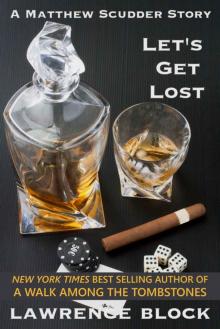 Let's Get Lost (A Matthew Scudder Story Book 8)
Let's Get Lost (A Matthew Scudder Story Book 8) Strange Are the Ways of Love
Strange Are the Ways of Love MOSTLY MURDER: Till Death: a mystery anthology
MOSTLY MURDER: Till Death: a mystery anthology Masters of Noir: Volume Four
Masters of Noir: Volume Four A Week as Andrea Benstock
A Week as Andrea Benstock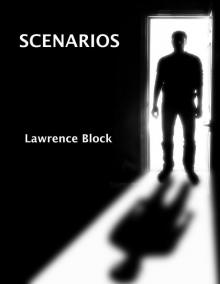 Scenarios (A Stoiry From the Dark Side)
Scenarios (A Stoiry From the Dark Side) The Sex Therapists: What They Can Do and How They Do It (John Warren Wells on Sexual Behavior Book 15)
The Sex Therapists: What They Can Do and How They Do It (John Warren Wells on Sexual Behavior Book 15)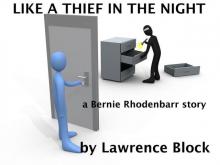 Like a Thief in the Night: a Bernie Rhodenbarr story
Like a Thief in the Night: a Bernie Rhodenbarr story A Diet of Treacle
A Diet of Treacle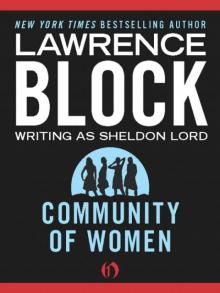 Community of Women
Community of Women Different Strokes: How I (Gulp!) Wrote, Directed, and Starred in an X-rated Movie (John Warren Wells on Sexual Behavior)
Different Strokes: How I (Gulp!) Wrote, Directed, and Starred in an X-rated Movie (John Warren Wells on Sexual Behavior) You Don't Even Feel It (A Story From the Dark Side)
You Don't Even Feel It (A Story From the Dark Side) Zeroing In (Kit Tolliver #11) (The Kit Tolliver Stories)
Zeroing In (Kit Tolliver #11) (The Kit Tolliver Stories) The Wife-Swap Report (John Warren Wells on Sexual Behavior)
The Wife-Swap Report (John Warren Wells on Sexual Behavior) Keller's Fedora (Kindle Single)
Keller's Fedora (Kindle Single) Speaking of Lust
Speaking of Lust Everybody Dies (Matthew Scudder)
Everybody Dies (Matthew Scudder) Defender of the Innocent: The Casebook of Martin Ehrengraf
Defender of the Innocent: The Casebook of Martin Ehrengraf After the First Death
After the First Death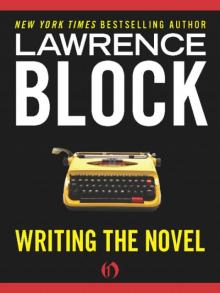 Writing the Novel
Writing the Novel How Far - a one-act stage play
How Far - a one-act stage play Chip Harrison Scores Again
Chip Harrison Scores Again The Topless Tulip Caper ch-4
The Topless Tulip Caper ch-4 The Crime of Our Lives
The Crime of Our Lives Killing Castro
Killing Castro The Trouble with Eden
The Trouble with Eden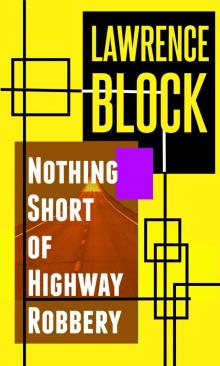 Nothing Short of Highway Robbery
Nothing Short of Highway Robbery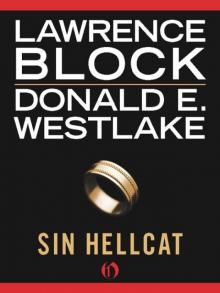 Sin Hellcat
Sin Hellcat Getting Off: A Novel of Sex & Violence (Hard Case Crime)
Getting Off: A Novel of Sex & Violence (Hard Case Crime) Coward's Kiss
Coward's Kiss Alive in Shape and Color
Alive in Shape and Color Blow for Freedom
Blow for Freedom The New Sexual Underground: Crossing the Last Boundaries (John Warren Wells on Sexual Behavior Book 10)
The New Sexual Underground: Crossing the Last Boundaries (John Warren Wells on Sexual Behavior Book 10) April North
April North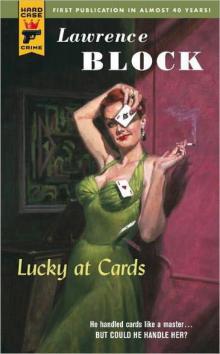 Lucky at Cards
Lucky at Cards One Night Stands; Lost weekends
One Night Stands; Lost weekends Sweet Little Hands (A Story From the Dark Side)
Sweet Little Hands (A Story From the Dark Side) Blood on Their Hands
Blood on Their Hands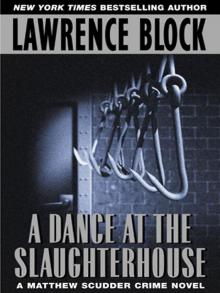 A Dance at the Slaughterhouse
A Dance at the Slaughterhouse Headaches and Bad Dreams (A Story From the Dark Side)
Headaches and Bad Dreams (A Story From the Dark Side) Keller's Therapy
Keller's Therapy The Specialists
The Specialists Hit and Run jk-4
Hit and Run jk-4 Threesome
Threesome Love at a Tender Age (John Warren Wells on Sexual Behavior)
Love at a Tender Age (John Warren Wells on Sexual Behavior) The Devil Knows You're Dead: A MATTHEW SCUDDER CRIME NOVEL
The Devil Knows You're Dead: A MATTHEW SCUDDER CRIME NOVEL Funny You Should Ask
Funny You Should Ask CH01 - No Score
CH01 - No Score Sex and the Stewardess (John Warren Wells on Sexual Behavior)
Sex and the Stewardess (John Warren Wells on Sexual Behavior) A Madwoman's Diary
A Madwoman's Diary When This Man Dies
When This Man Dies Sinner Man
Sinner Man Such Men Are Dangerous
Such Men Are Dangerous A Strange Kind of Love
A Strange Kind of Love Enough of Sorrow
Enough of Sorrow 69 Barrow Street
69 Barrow Street A Moment of Wrong Thinking (Matthew Scudder Mysteries Series Book 9)
A Moment of Wrong Thinking (Matthew Scudder Mysteries Series Book 9) Eight Million Ways to Die ms-5
Eight Million Ways to Die ms-5 Warm and Willing
Warm and Willing Mona
Mona In Sunlight or In Shadow
In Sunlight or In Shadow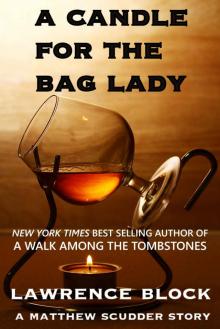 A Candle for the Bag Lady (Matthew Scudder Book 2)
A Candle for the Bag Lady (Matthew Scudder Book 2) Conjugal Rites (Kit Tolliver #7) (The Kit Tolliver Stories)
Conjugal Rites (Kit Tolliver #7) (The Kit Tolliver Stories)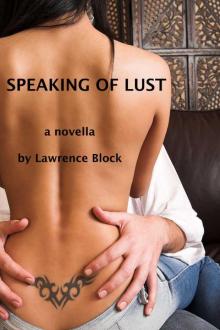 Speaking of Lust - the novella
Speaking of Lust - the novella Gigolo Johnny Wells
Gigolo Johnny Wells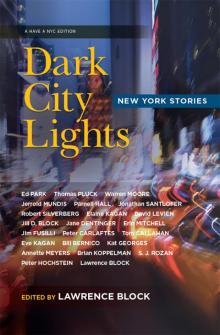 Dark City Lights
Dark City Lights Versatile Ladies: the bisexual option (John Warren Wells on Sexual Behavior)
Versatile Ladies: the bisexual option (John Warren Wells on Sexual Behavior) Passport to Peril
Passport to Peril The Taboo Breakers: Shock Troops of the Sexual Revolution (John Warren Wells on Sexual Behavior)
The Taboo Breakers: Shock Troops of the Sexual Revolution (John Warren Wells on Sexual Behavior) Lucky at Cards hcc-28
Lucky at Cards hcc-28 Campus Tramp
Campus Tramp 3 is Not a Crowd (John Warren Wells on Sexual Behavior)
3 is Not a Crowd (John Warren Wells on Sexual Behavior)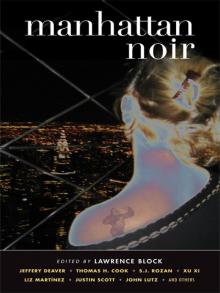 Manhattan Noir
Manhattan Noir The Burglar in the Library
The Burglar in the Library Doing It! - Going Beyond the Sexual Revolution (John Warren Wells on Sexual Behavior Book 13)
Doing It! - Going Beyond the Sexual Revolution (John Warren Wells on Sexual Behavior Book 13) So Willing
So Willing The Burglar Who Traded Ted Williams br-6
The Burglar Who Traded Ted Williams br-6 Candy
Candy Sex Without Strings: A Handbook for Consenting Adults (John Warren Wells on Sexual Behavior)
Sex Without Strings: A Handbook for Consenting Adults (John Warren Wells on Sexual Behavior) The Devil Knows You're Dead: A MATTHEW SCUDDER CRIME NOVEL (Matthew Scudder Mysteries)
The Devil Knows You're Dead: A MATTHEW SCUDDER CRIME NOVEL (Matthew Scudder Mysteries) Manhattan Noir 2
Manhattan Noir 2 The Scoreless Thai (aka Two For Tanner)
The Scoreless Thai (aka Two For Tanner)